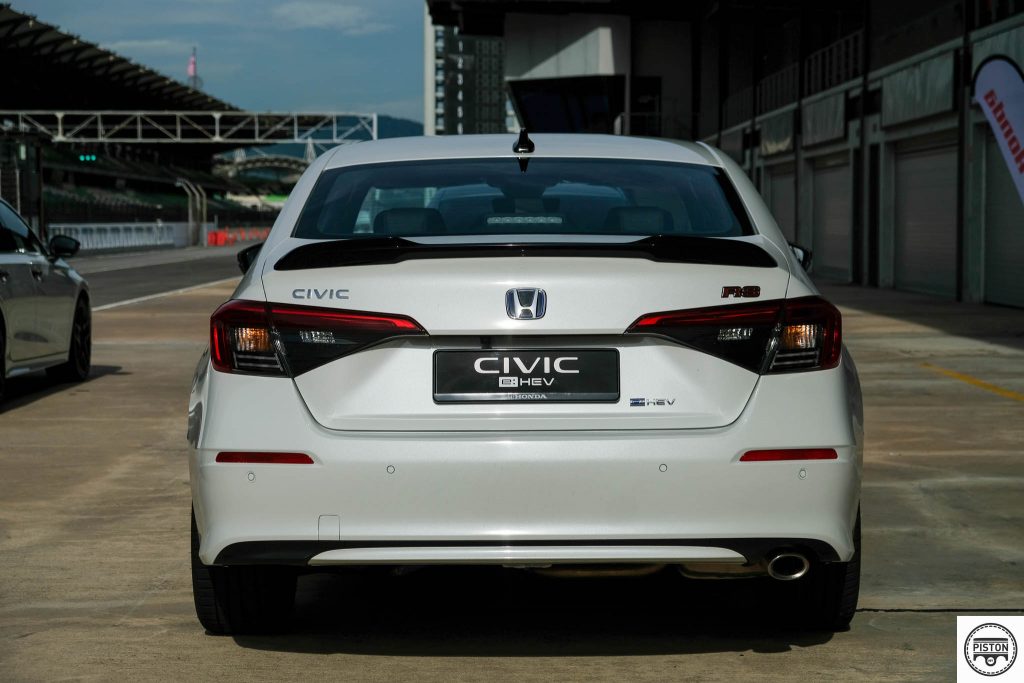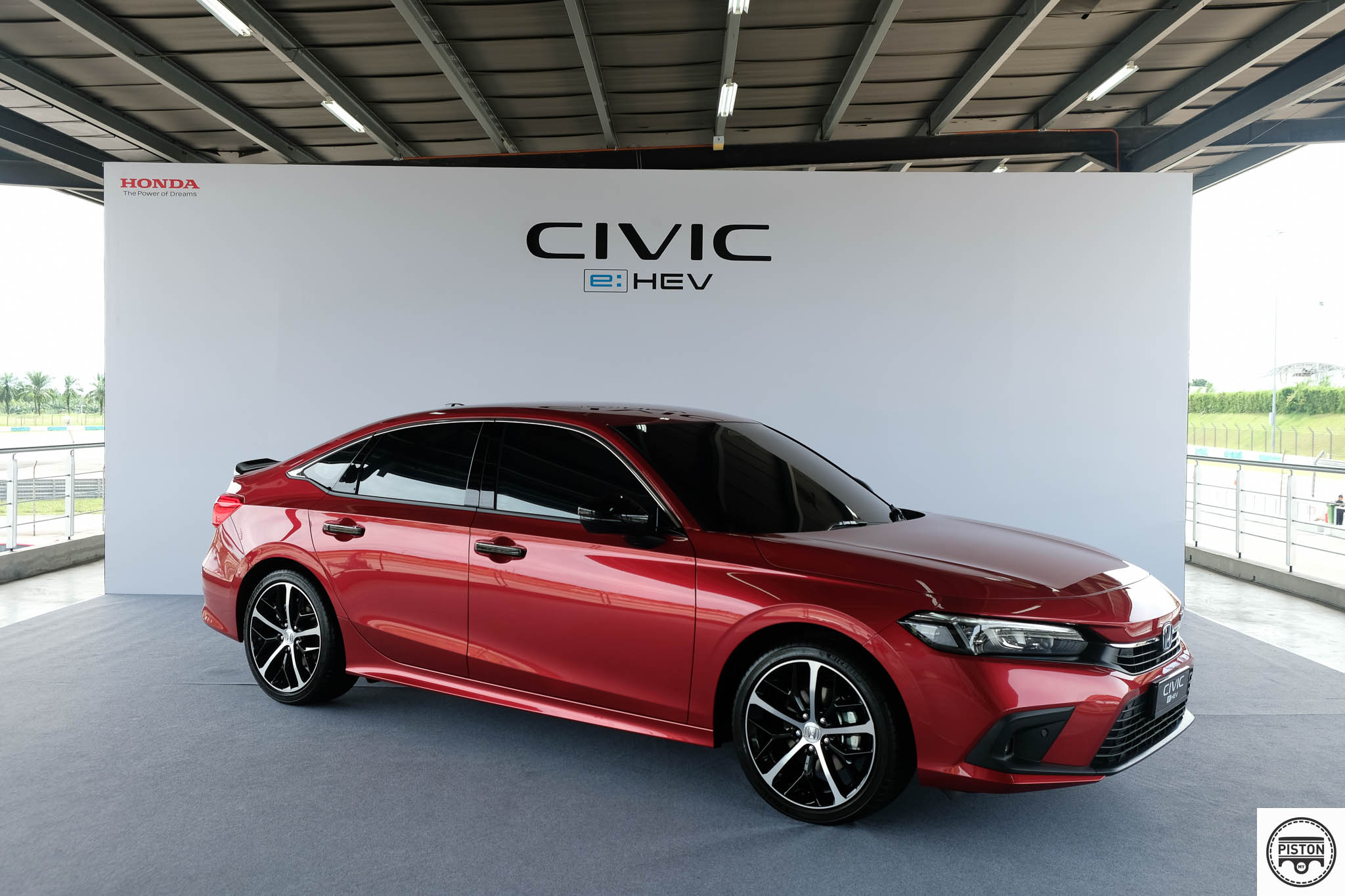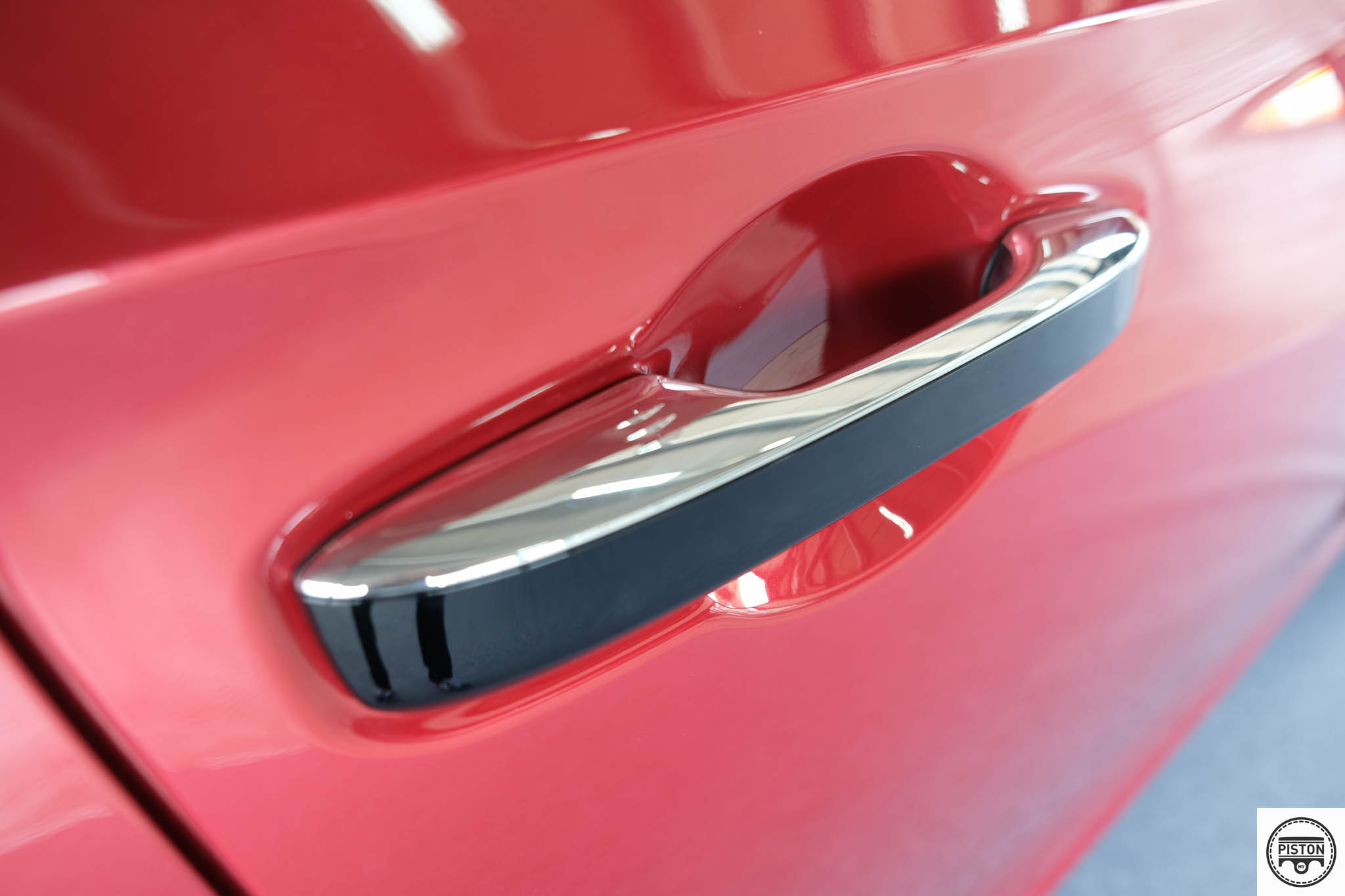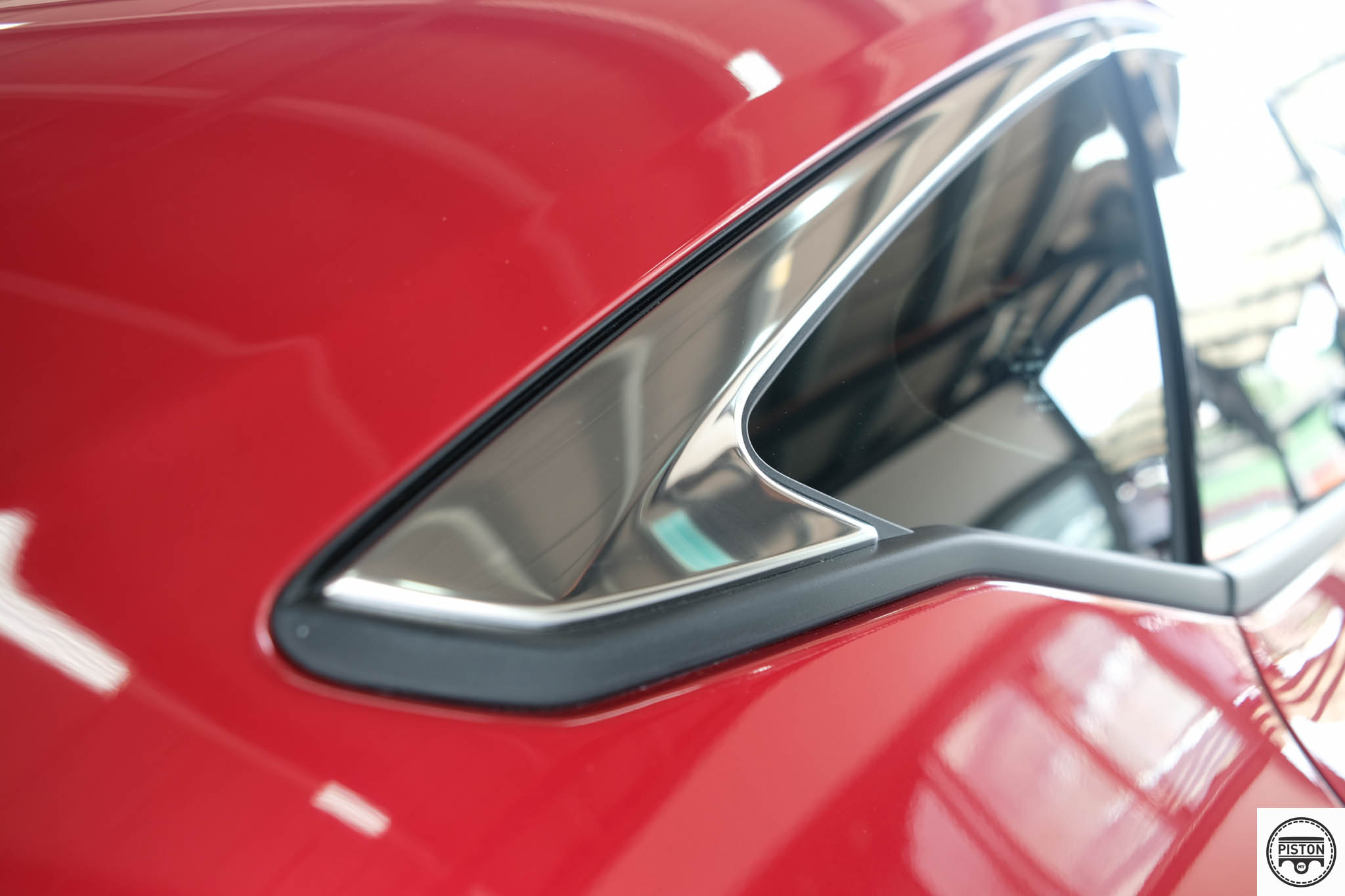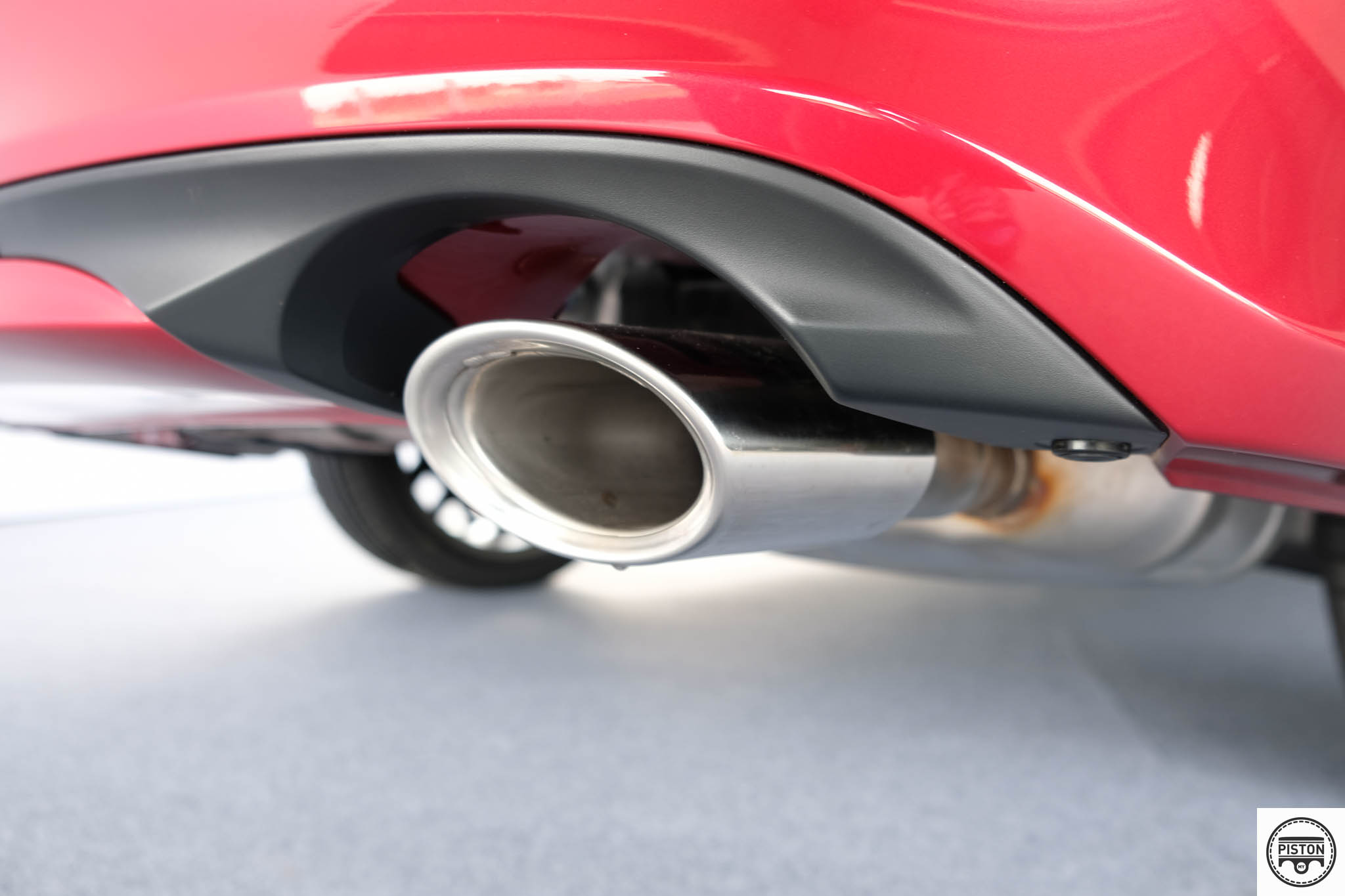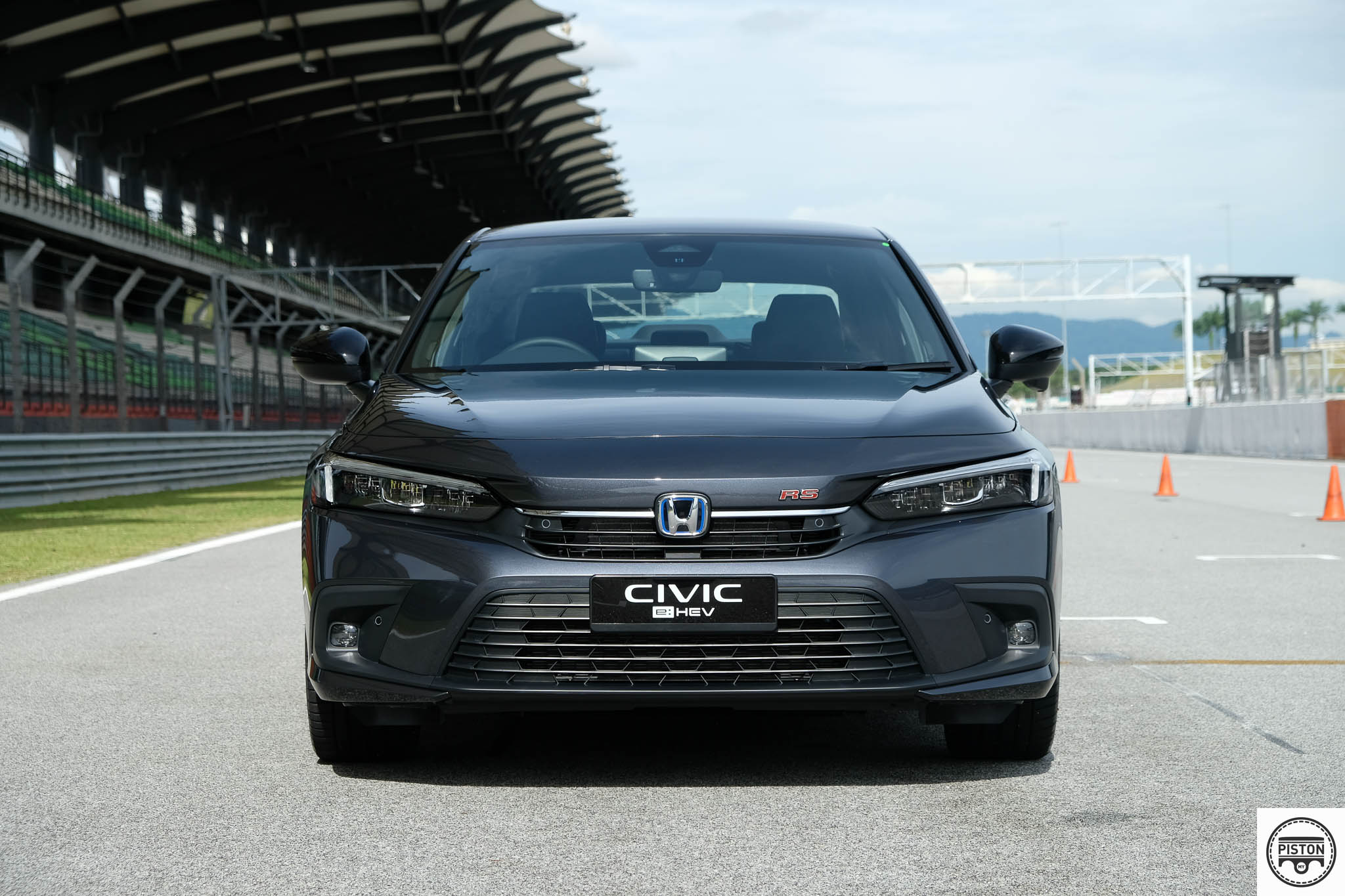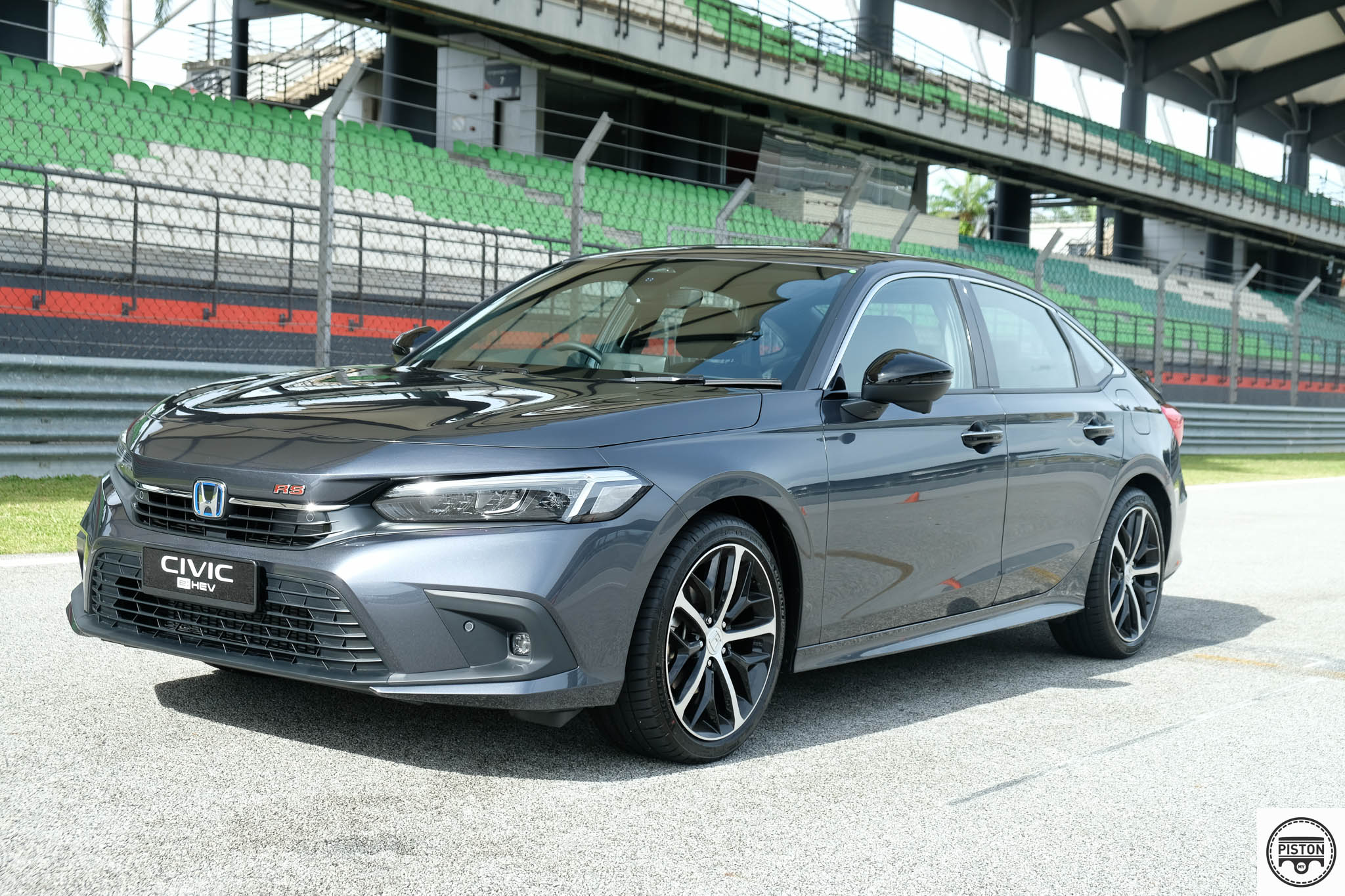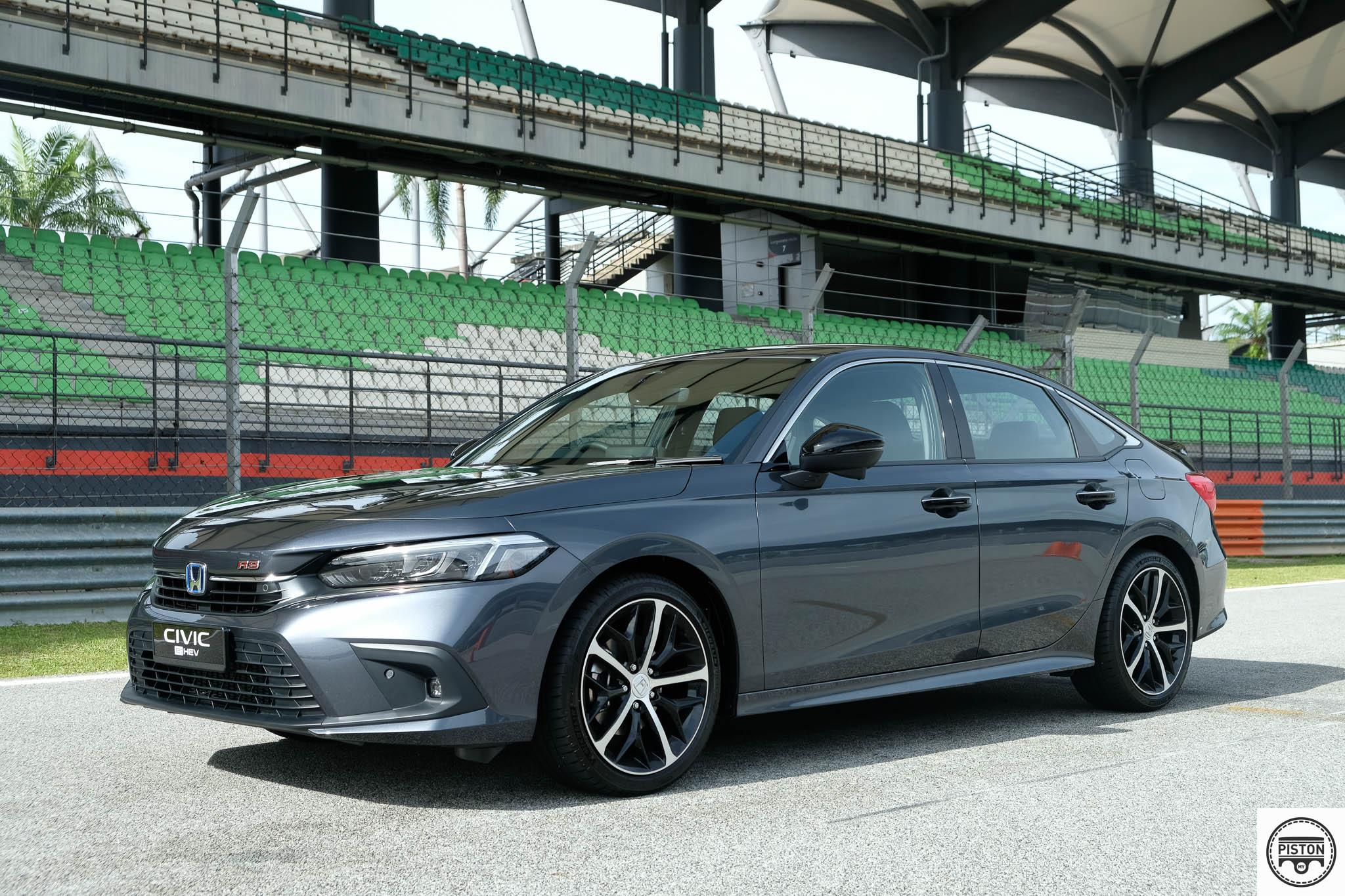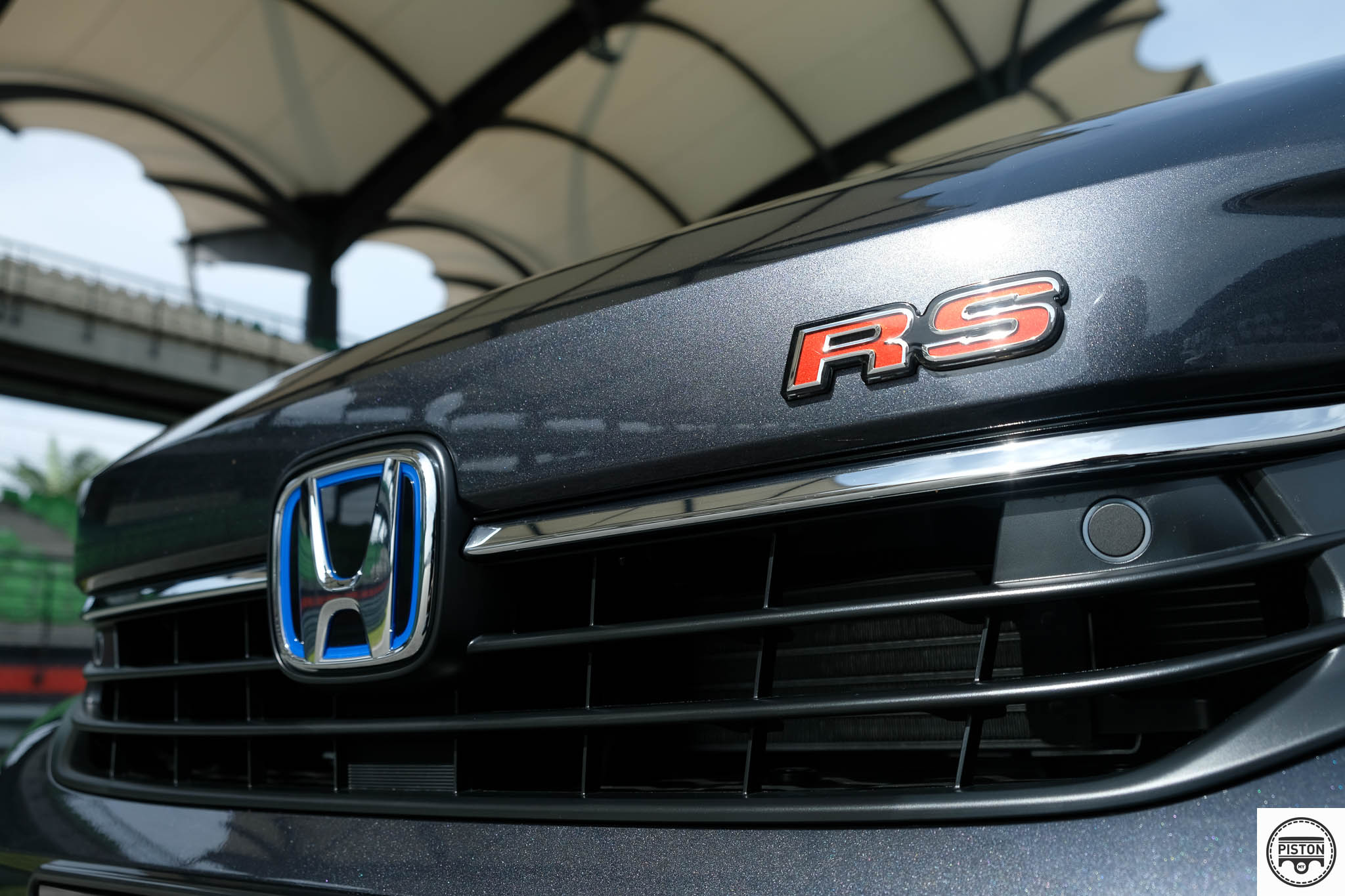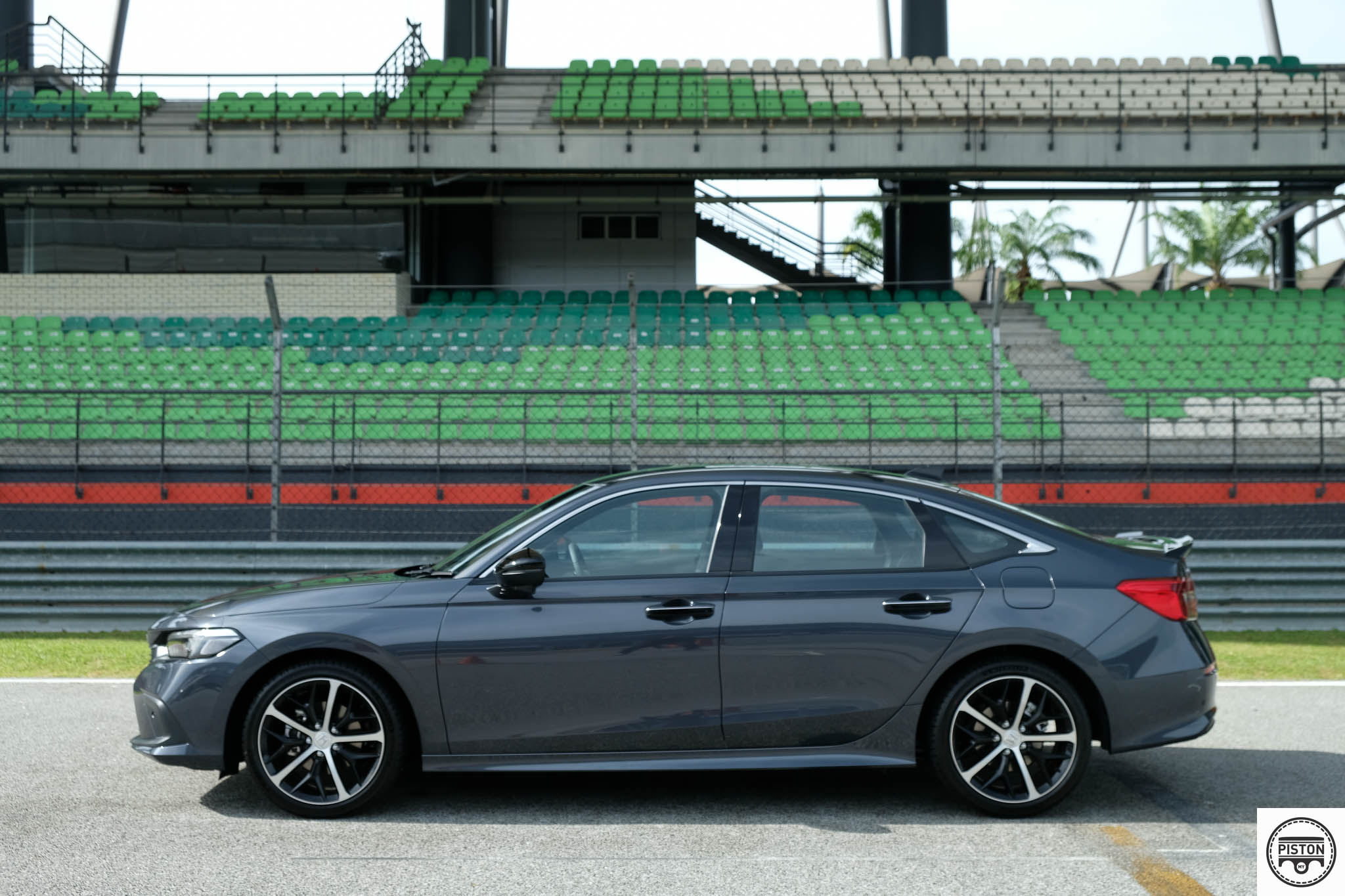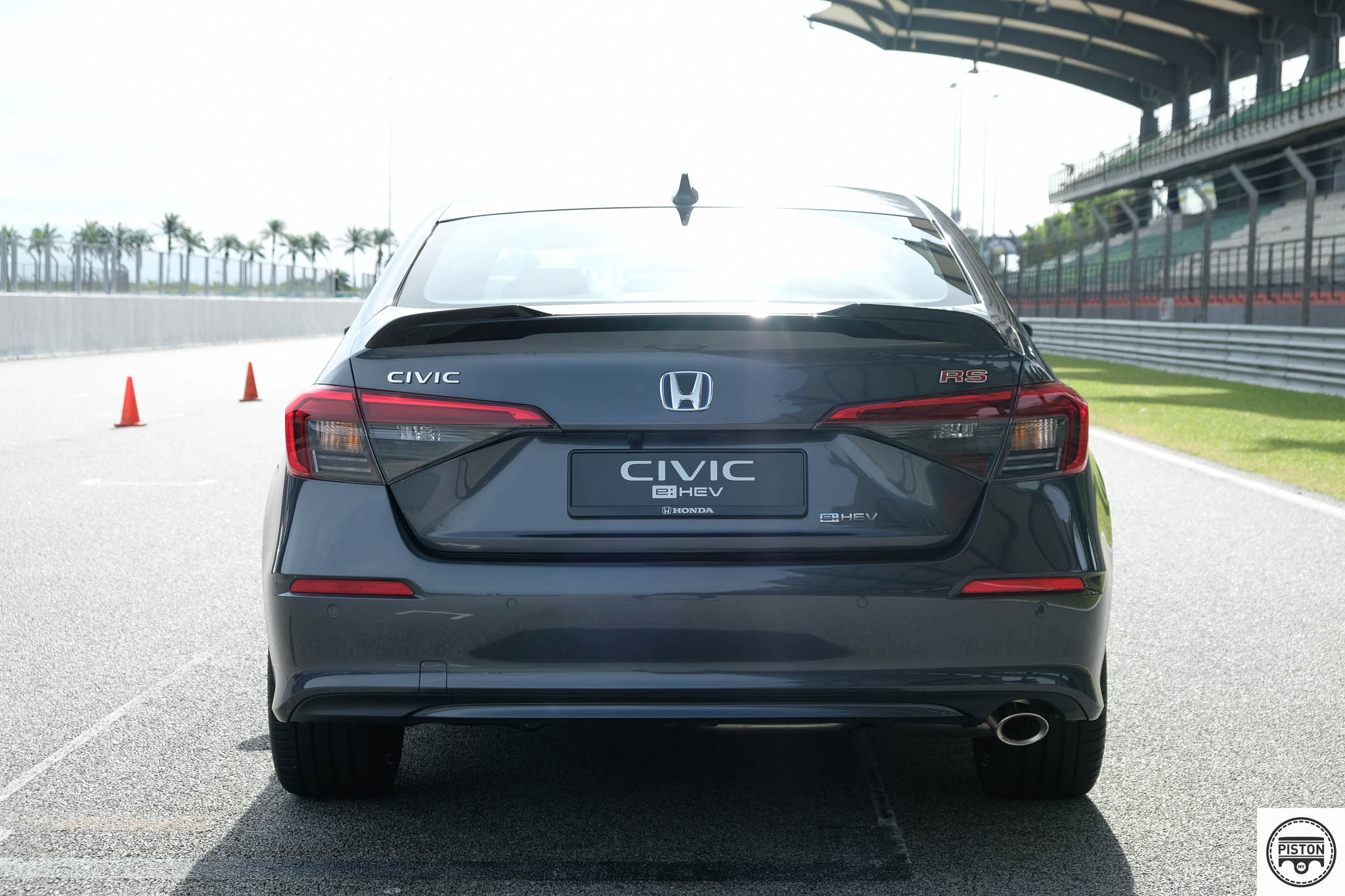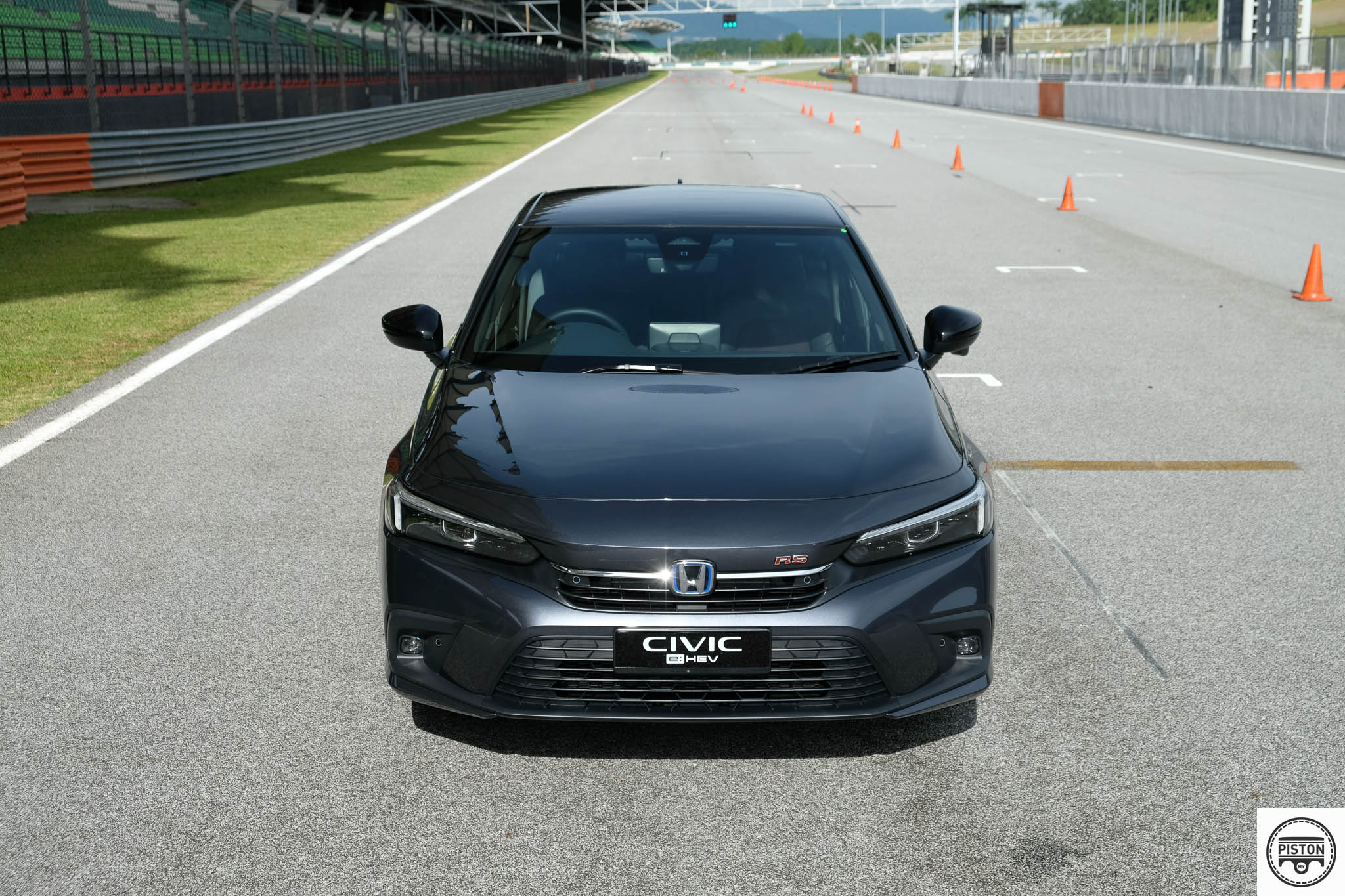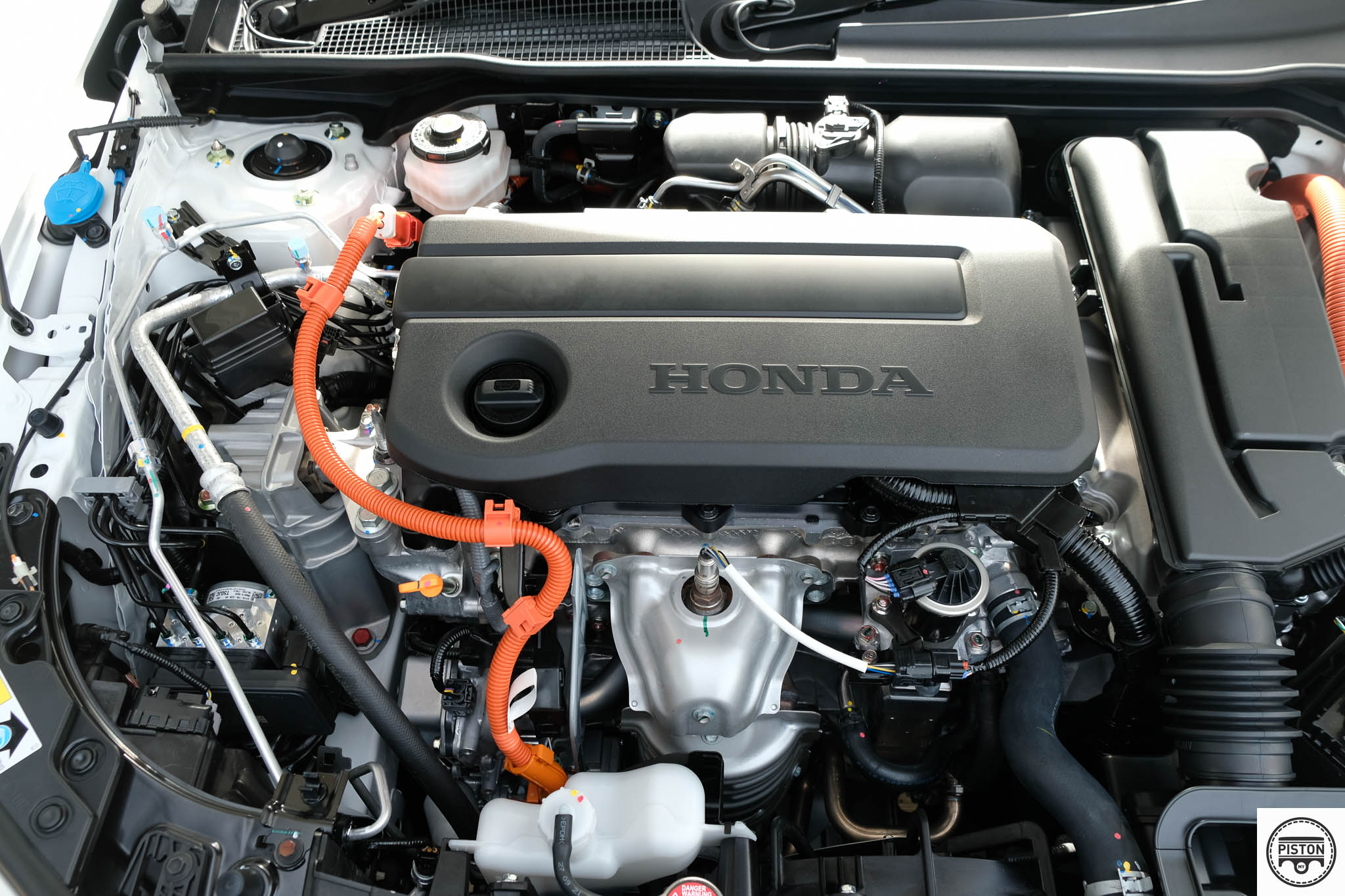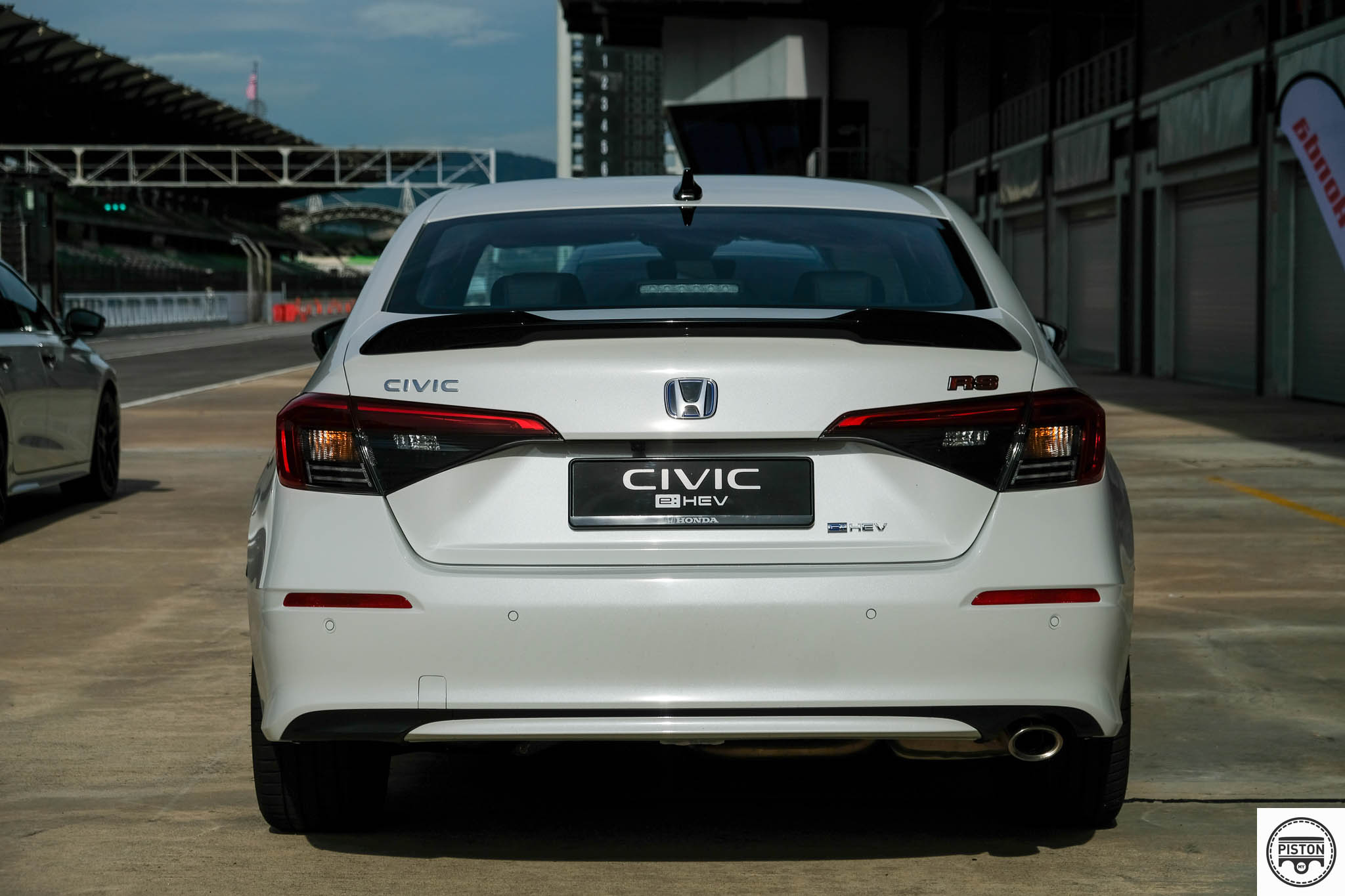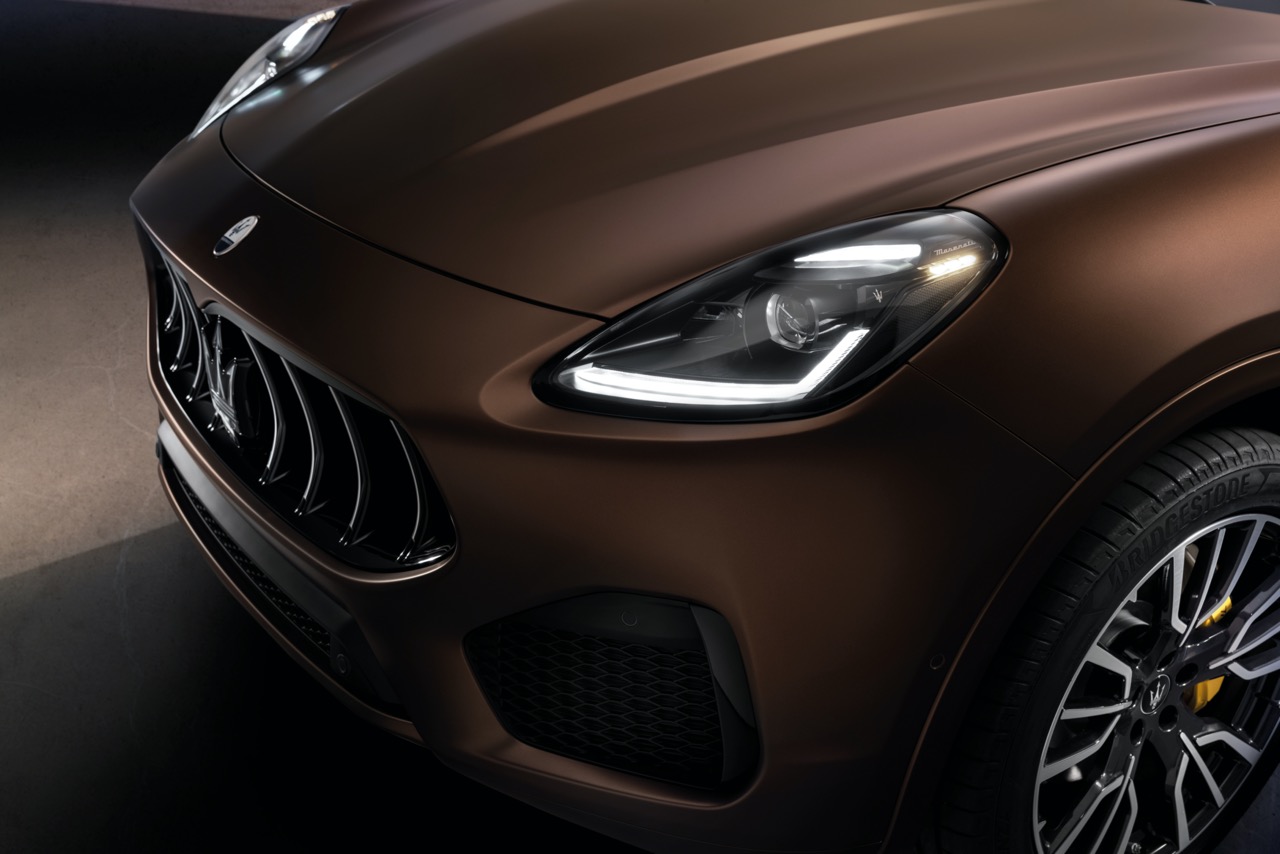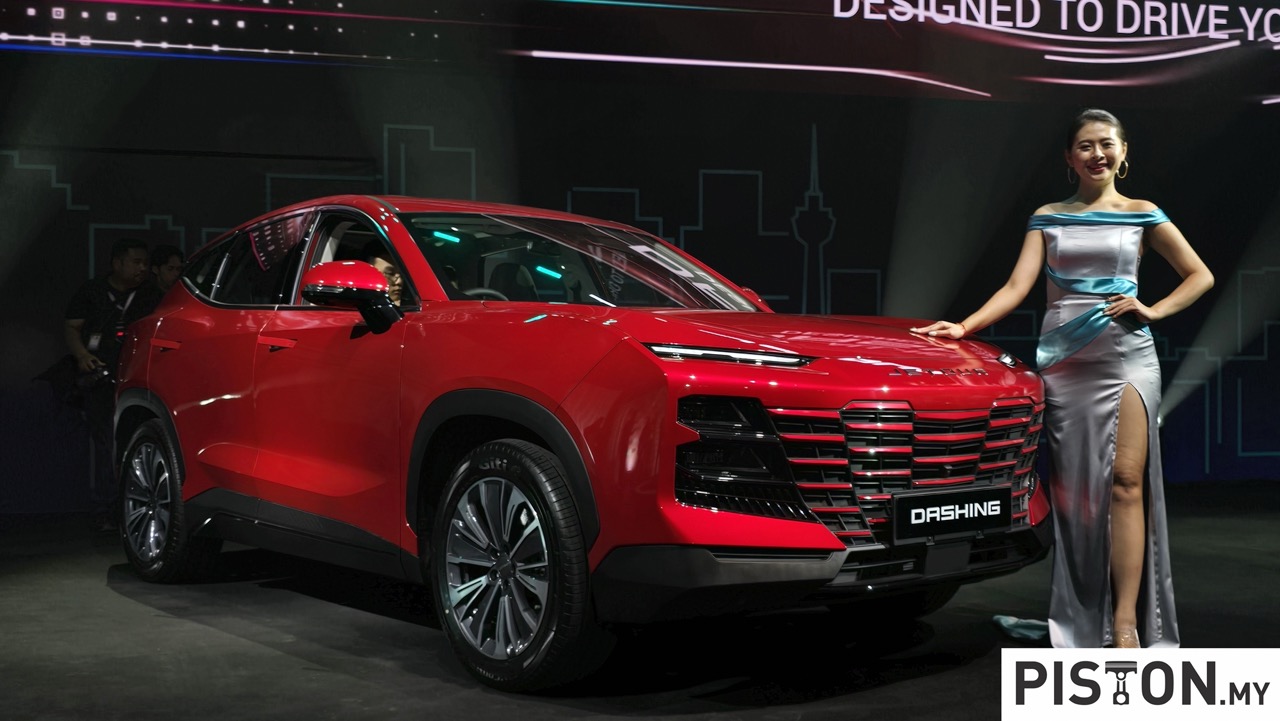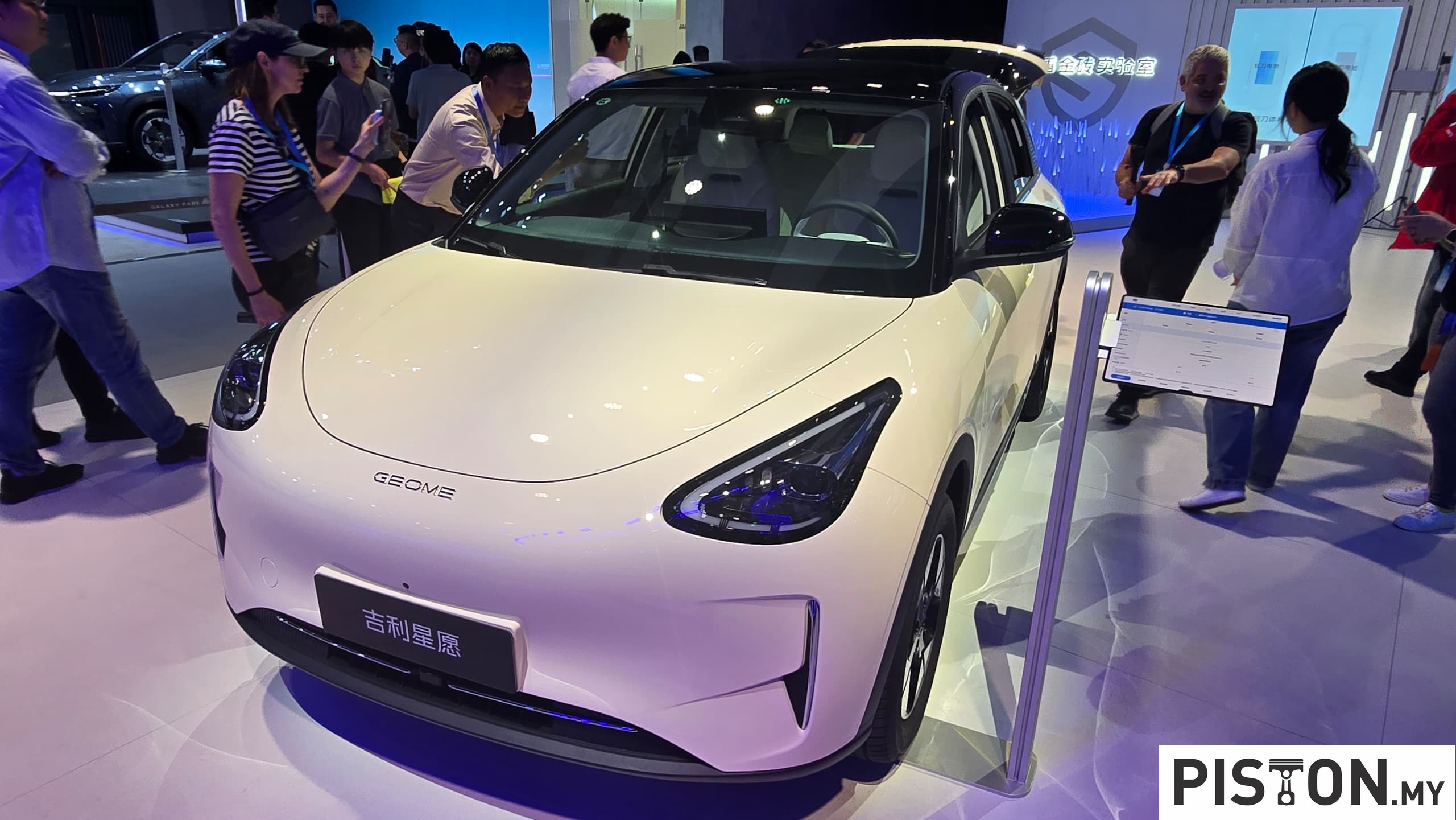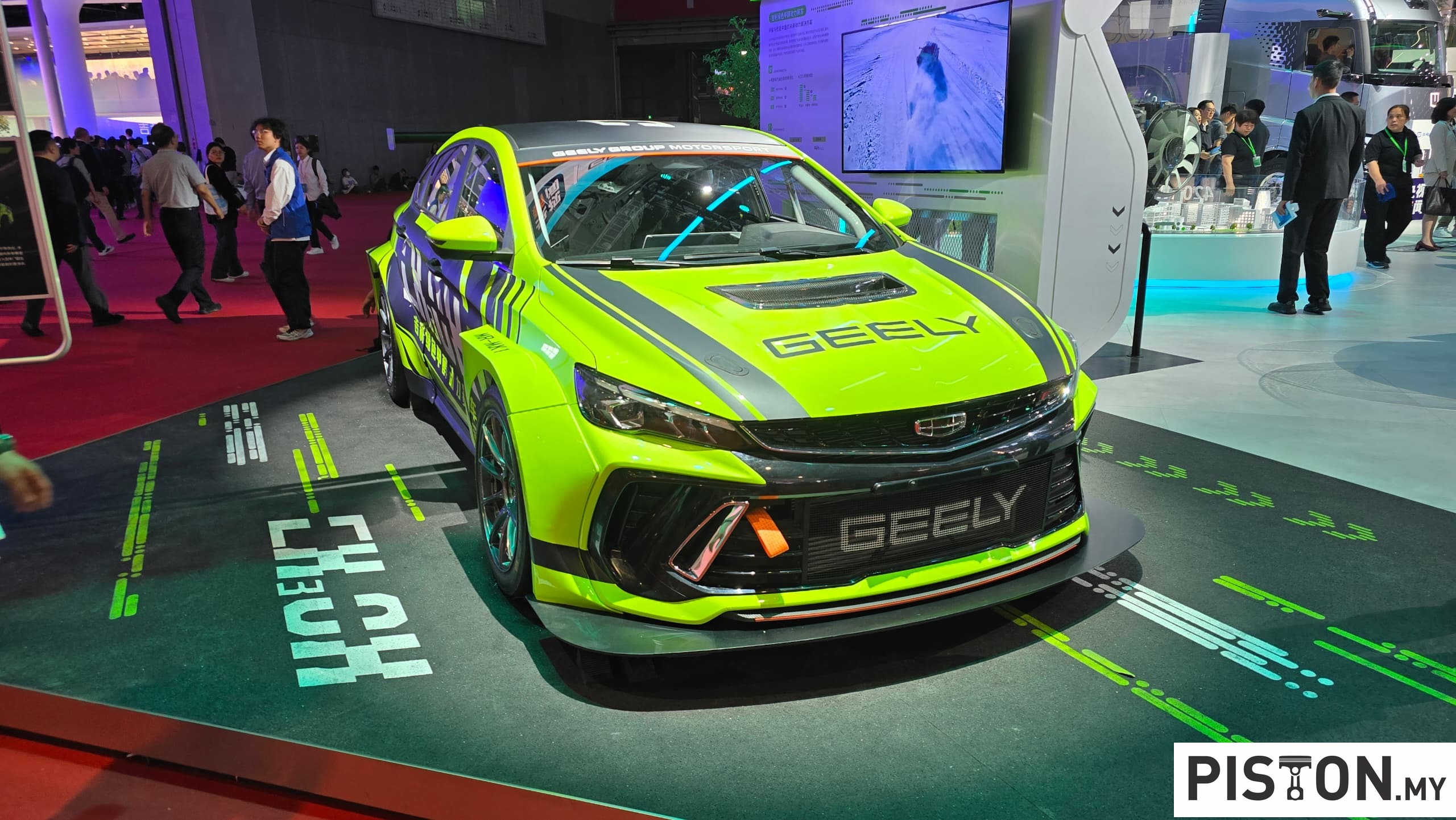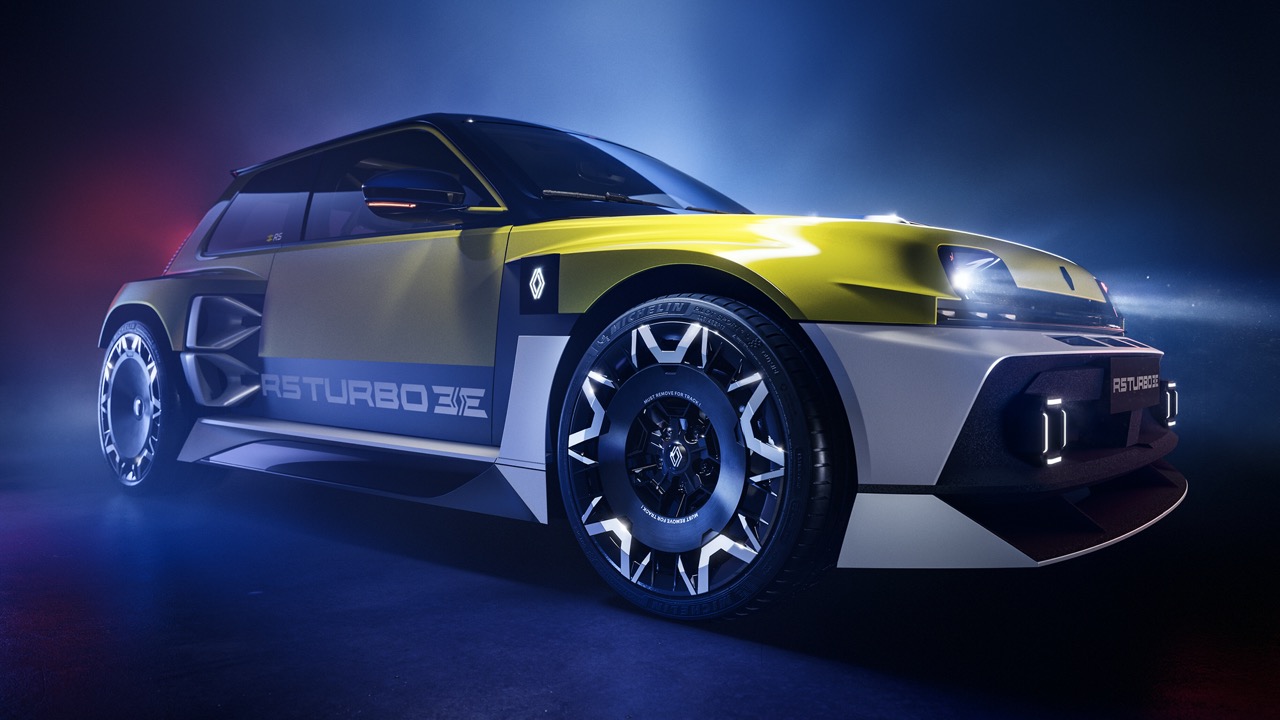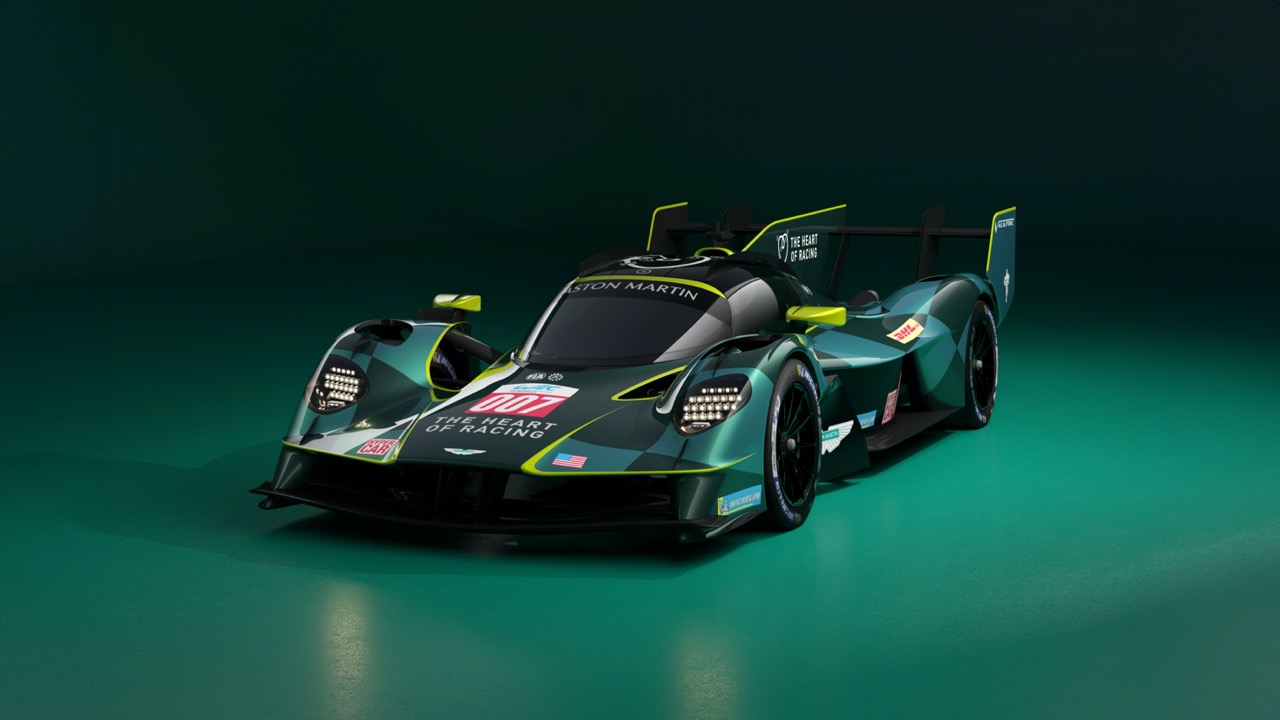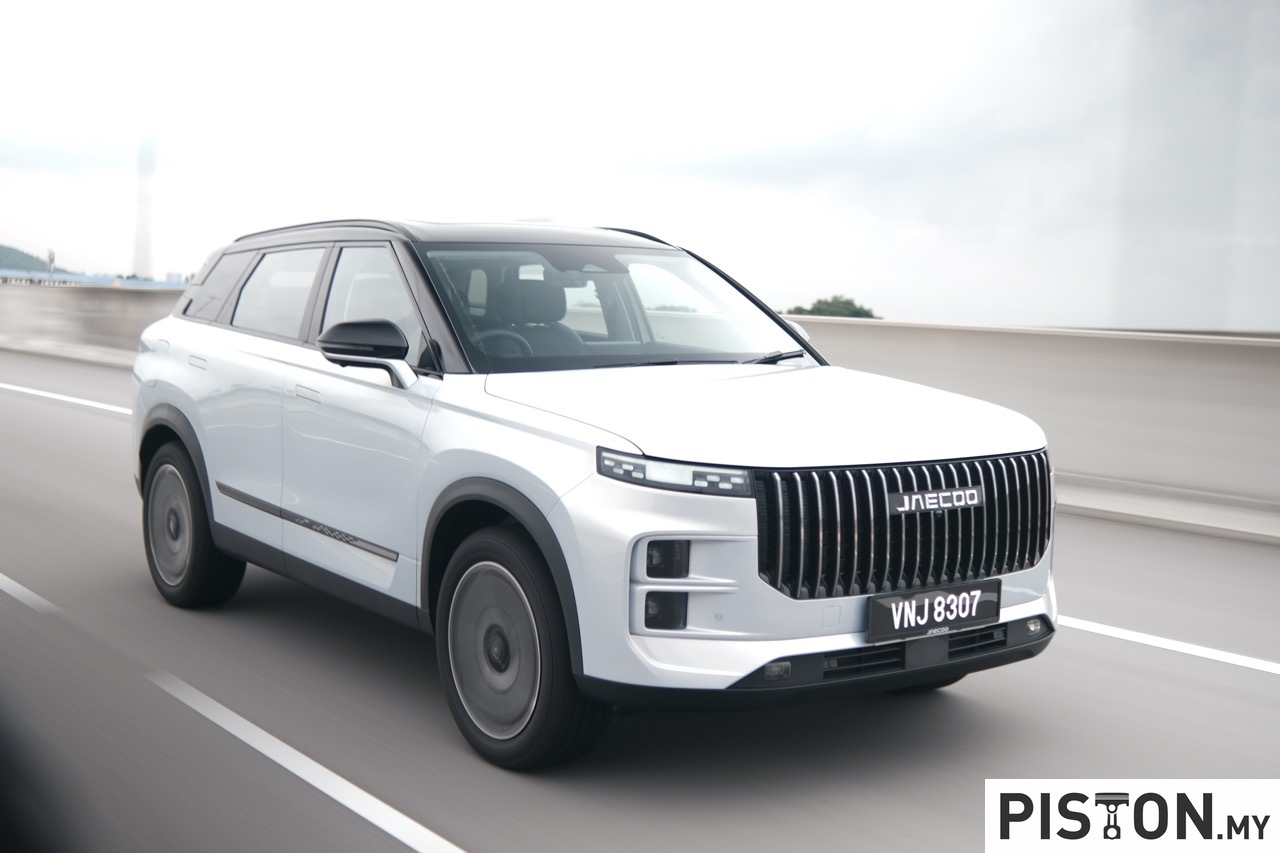When the latest 11th generation Honda Civic was launched in January, we asked Honda Malaysia about the possibility of a hybrid version also being available. At that time, it was already known that the latest generation did have a hybrid variant (which Honda refers to as e:HEV) that was to be sold in Europe with a hatchback bodystyle. Honda Malaysia said they ‘would consider it’ as a future addition then…
10 months later, the Civic e:HEV is about to be launched and it’s clear that the company must have already been working on it and not just ‘considering it’ because it takes time to plan for local assembly at the Melaka plant. And now that the launch will take place soon, Honda Malaysia has offered us a chance to get first impressions of the new model.
Our drive took place at the Sepang International Circuit with the same condition that we can tell you about the exterior and the driving impressions and the e:HEV technology, but not what the interior is like (for now).
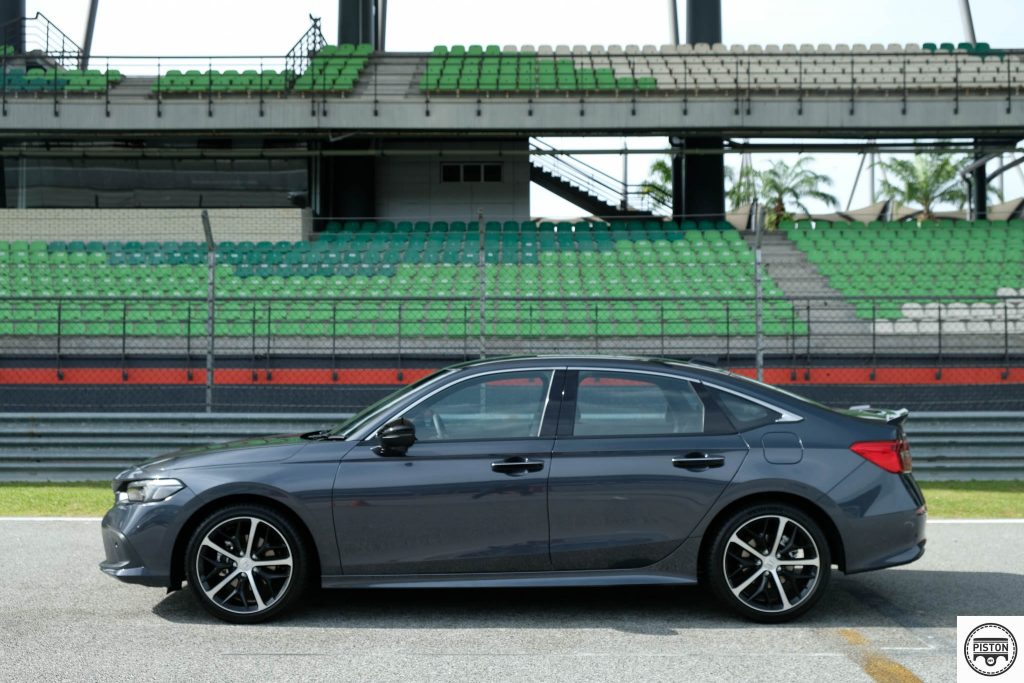
Externally, the Civic RS e:HEV looks similar to the petrol-engined versions at a glance. And since it’s been on the road for 10 months, we don’t need to go into the design again. However, when you put it next to its combustion engine counterpart, then the subtle differences are noticeable in the chrome trim around the windows and the different 18-inch wheels, and of course, the badging which has a blue highlight.
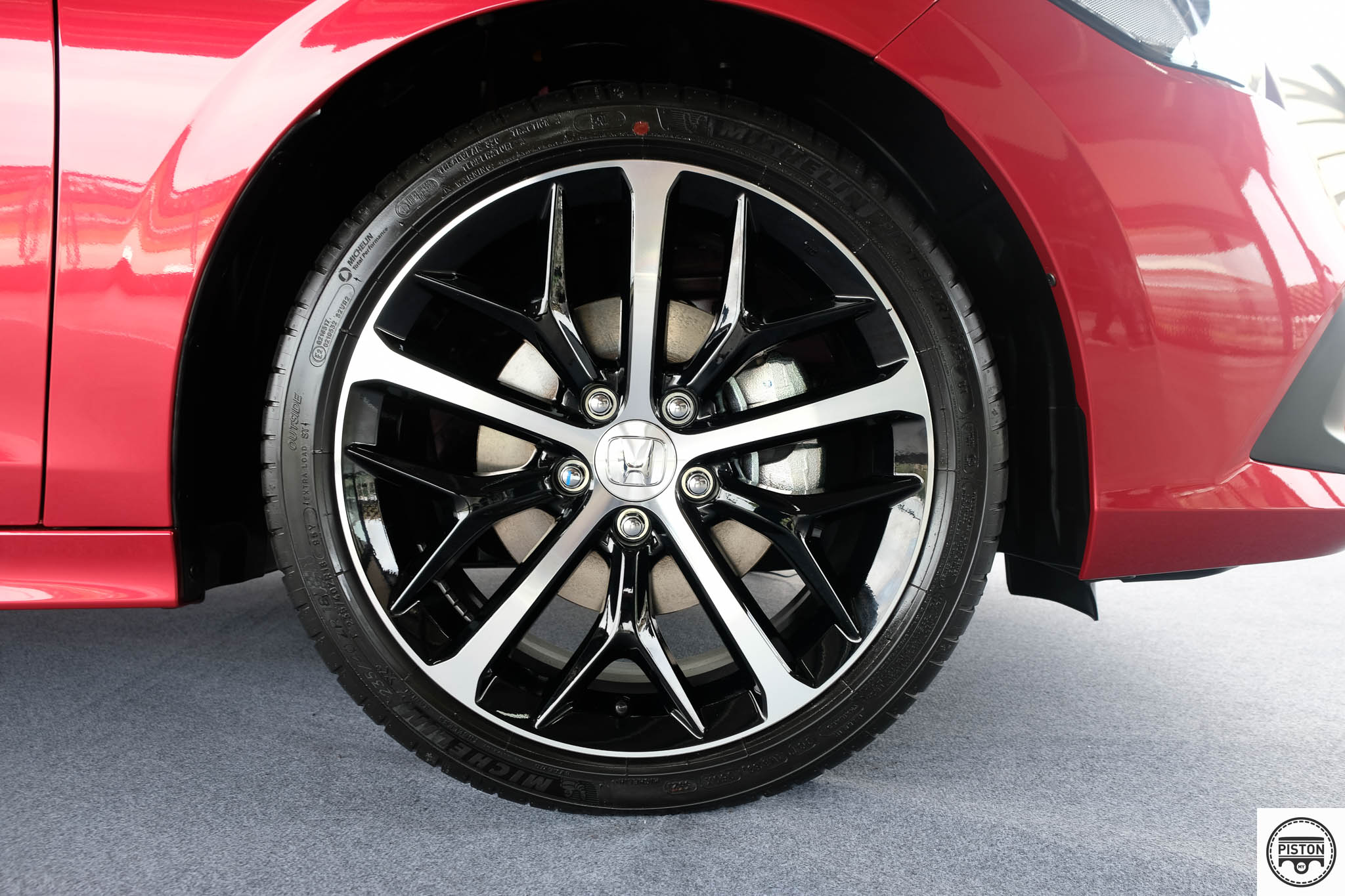
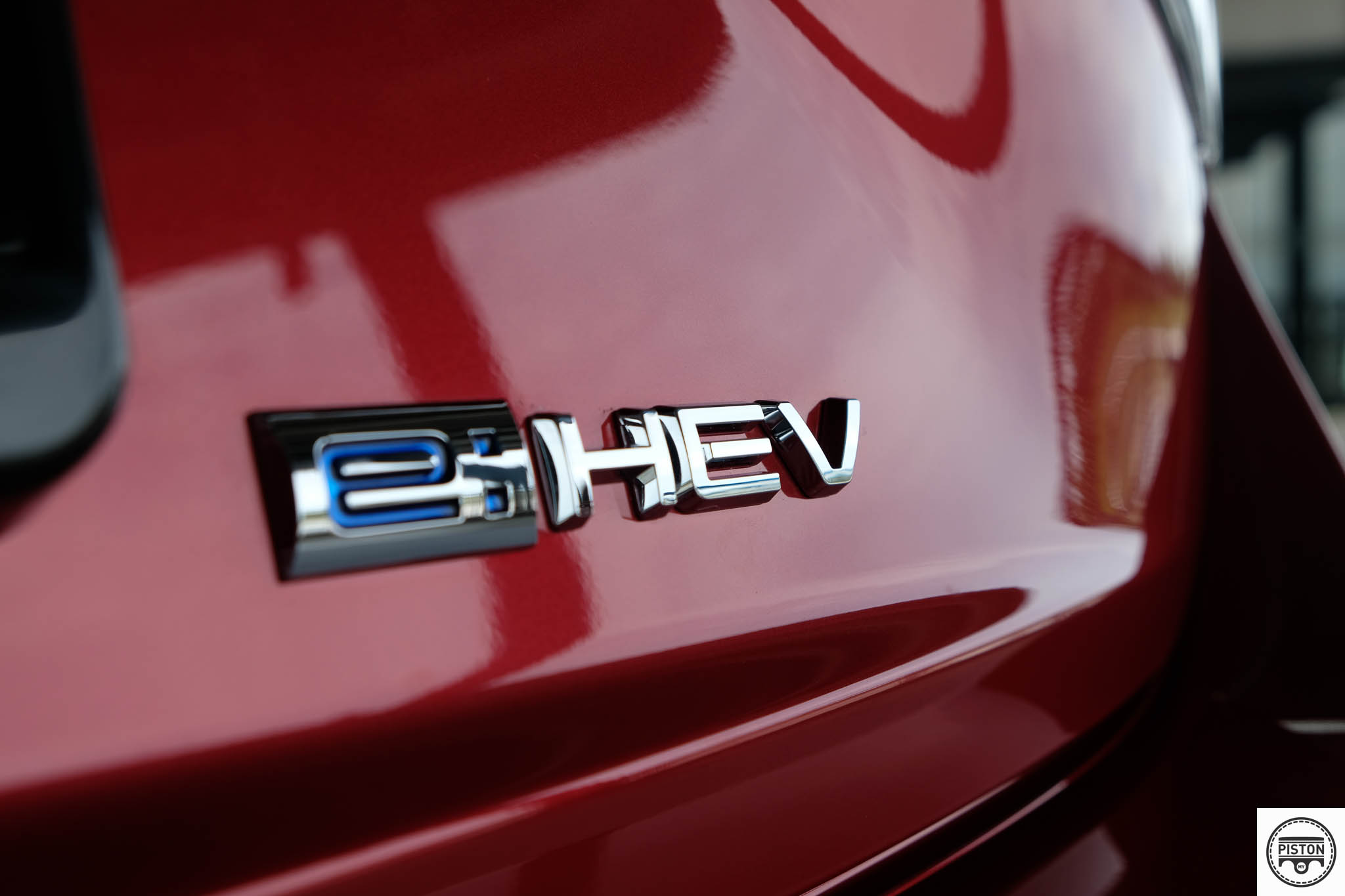
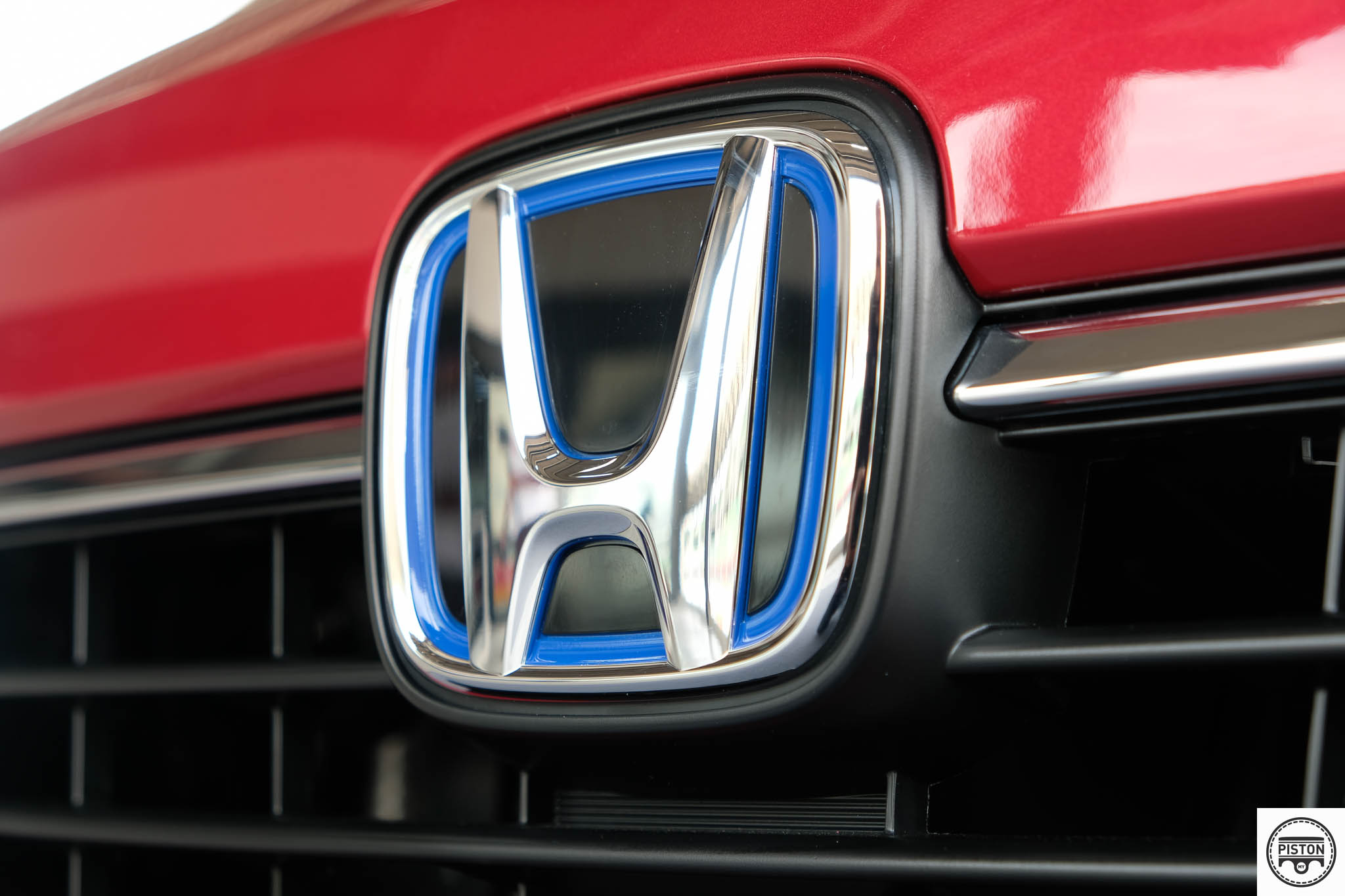
The e:HEV technology is Honda’s latest hybrid technology and similar to that in the City RS e:HEV, However, instead of a 1.5-litre petrol engine, the system has a 2-litre VTEC engine and with this bigger engine, the e:HEV system for the Civic is the most powerful currently available. The engine output is 143 ps/189 Nm, with the total electric motor output being 184 ps/315 Nm.
Related feature: Honda e:HEV – How Honda’s hybrid technology has evolved in over 20 years
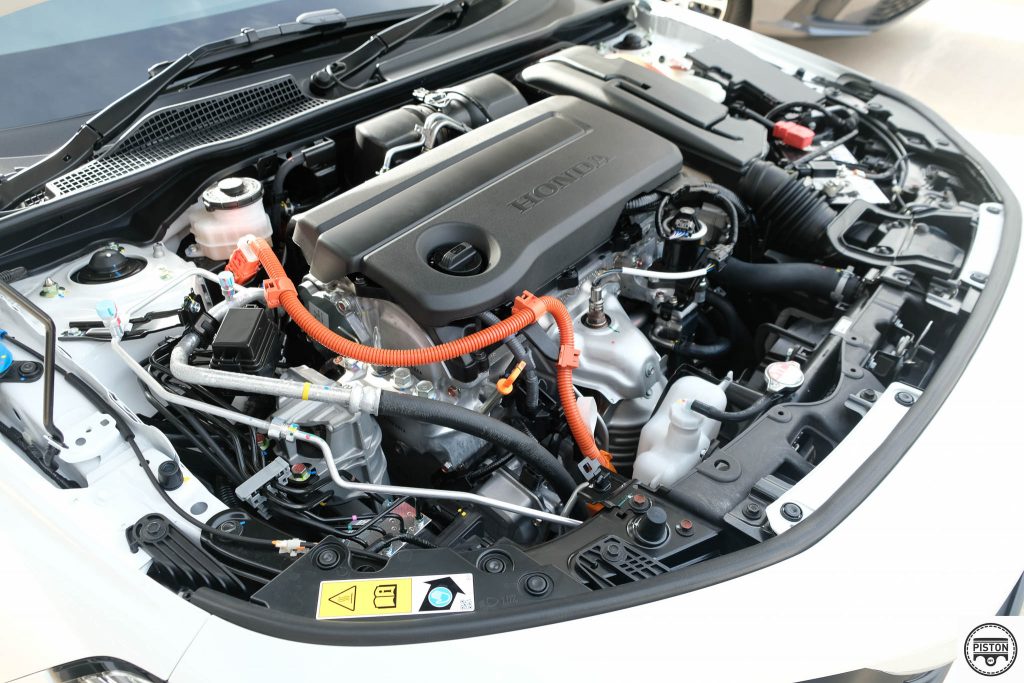
Unlike some other hybrid systems, the e:HEV system prioritizes the electric motor which does the work most of the time. The engine is more for generating electricity but will also come in for propulsion duties when strong acceleration is needed or at high cruising speeds. Using the electric motor to propel the car most of the time gives advantages that a fully electric car has, like minimal vibrations (almost none actually), strong response and of course fuel-saving.
With the motor almost always being used to move the car off the line, there is very high torque available the moment it moves. One thing that is rather weird, though, is that pressing the start button doesn’t start the engine so there is no noise, no vibration and only a READY indicator to say it can move.
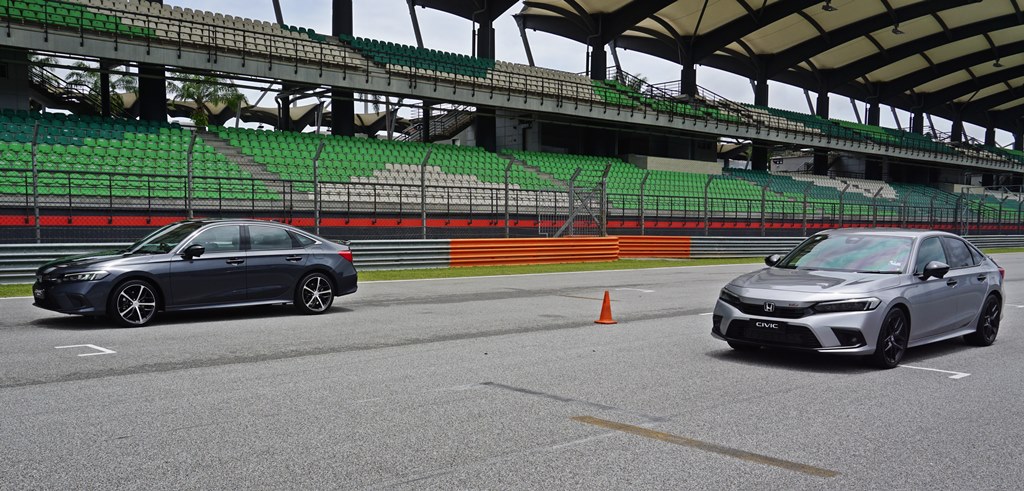
With almost 100% of maximum torque available from start, there’s strong acceleration and this was very evident doing side-by-side runs with the combustion engine Civic that has a 1.5-litre turbocharged engine. The Civic e:HEV would very quickly pull ahead and then continue accelerating without losing its momentum.
It would be an exaggeration to say it ‘rockets’ off but it does have strong and satisfying acceleration. This characteristic also means that drivers new to the e:HEV (and fully electric cars) need to change their way of driving a bit. Most may be used to pressing the accelerator pedal hard to get the strongest acceleration but you don’t need to press so hard. If you do, you may find the surge stronger than what is usually expected and possibly bump into someone.
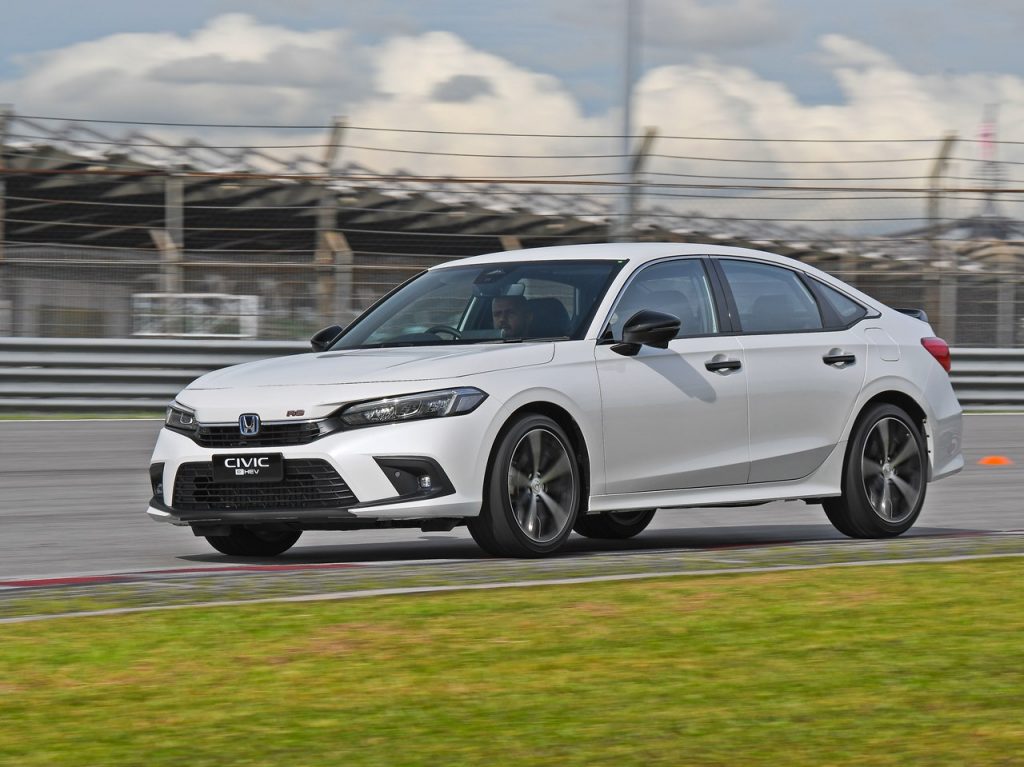
At sustained higher speeds, the engine does come into play to provide additional power. But you don’t feel the different unless you watch the energy flow meter. The transition between the engine being connected to drive the wheels and not being connected is seamless, an impressive achievement by the engineers and programmers. And whenever the load eases off, even momentarily, the engine disconnects right away. All these brief disconnections will help to save fuel in the long run, which is why it’s a good idea to own a hybrid.
Power flows from the motor through an eCVT which is essentially a 1-speed transmission which can spin up to 13,500 rpm. Though it has ‘CVT’ in its name, it does not have the unpleasant ‘rubberband’ character and smoothly matches the speed of the motor in a progressive way.
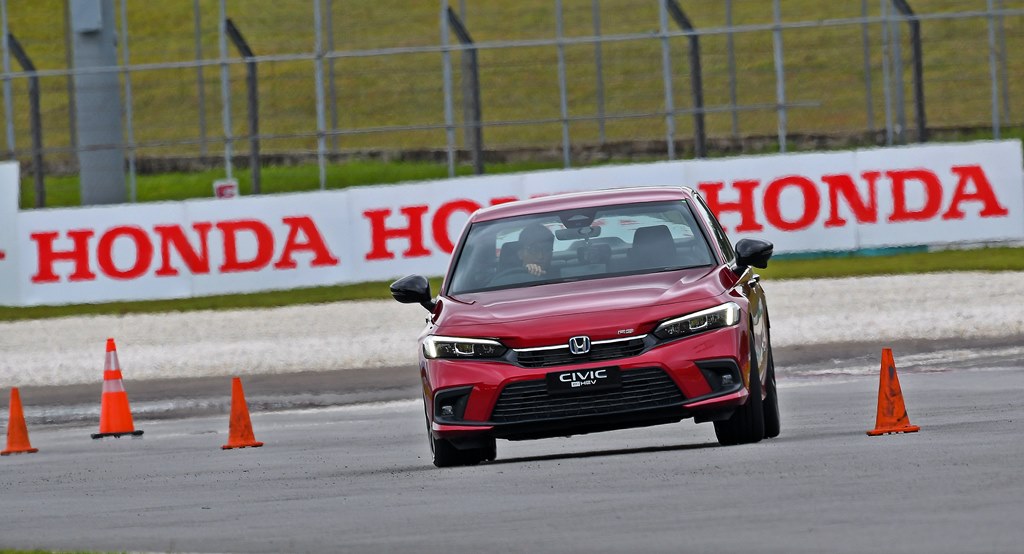
Going through the slalom test with the Civic e:HEV and the combustion engine version, it was evident that the additional weight of the lithium-ion battery pack – in the right place under the middle – enhanced stability. The car rolls less as it shifts from left to right, and with the lower centre of gravity, it feels l more planted through sweeping curves.
The overall handling behaviour is not a lot different, which is to say it is competent reasonably agile. With the slight weight increase, the ride feels a bit more stable so there’s a good balance between comfort and handling.

While much attention is focussed on fully electric vehicles these days, we feel that hybrids like the Civic e:HEV are more practical to own, if you want an electrified vehicle. Just as turbochargers are not uncommon now and people don’t think about them being part of the engine, hybrid systems are also just as ‘transparent’ in that they need no special attention.
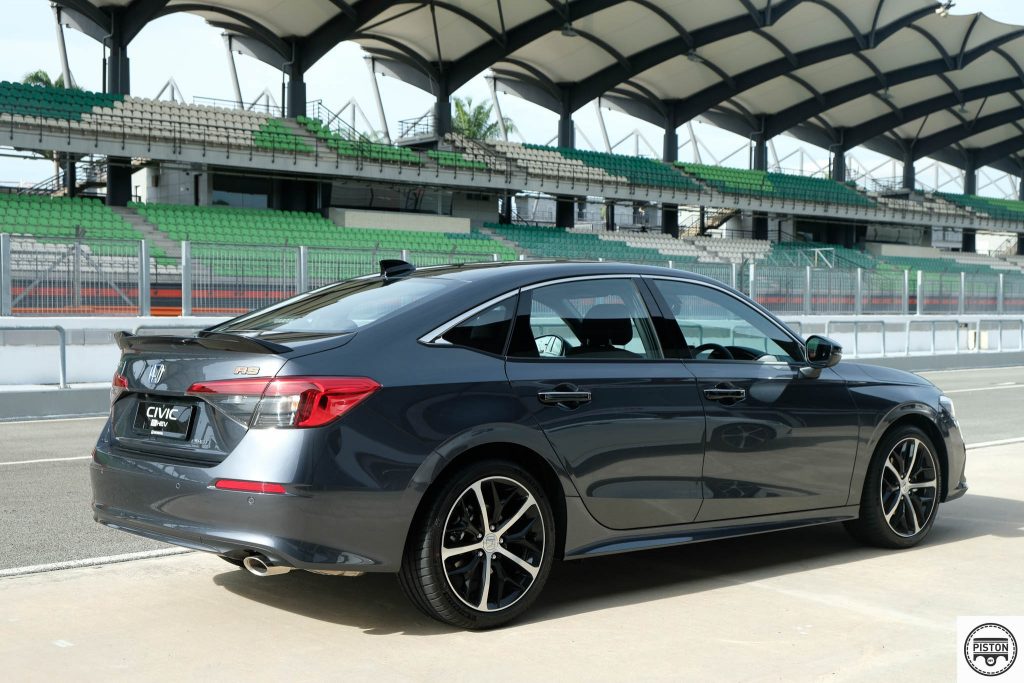
You don’t need to worry about finding a place to recharge the battery pack regularly because the system is self-charging as the car moves. And in the worst case when the battery pack does completely empty, the engine can still get you home. It may not run pleasantly but that’s better than being stranded along the highway.
